Home>The Turkish Republic: A Century of Political and Social Transformations
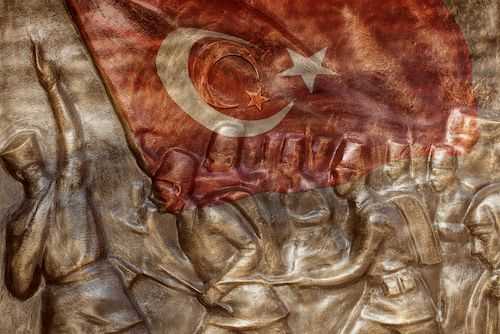
28.07.2023
The Turkish Republic: A Century of Political and Social Transformations
Interview with Bayram Balci & Nicolas Monceau
The Republic of Turkey celebrates the centenary of its proclamation in 2023. With their recently coedited volume published within the Sciences Po series in International Relations and Political Economy, Bayram Balci and Nicolas Monceau offer a timely discussion looking back at 100 years of the Republic that also coincides with Turkey’s 2023 presidential and general elections. Below is an interview with the two specialists on the country.
You recently coedited the volume Turkey, A Century of Change in State and Society, published with Palgrave Macmillan. One hundred years of change, for a perpetually moving country. What have been the major moments of transformation for the Turkish Republic?
In its century of existence, Turkey has undergone many transformations in various areas: religious, political, diplomatic, and other. These changes have been produced by policies developed and implemented not only by the country’s leaders, but also, often, under the influence of the international context. Thus, several significant dates that are pivotal in the history of the Republic can be highlighted since its foundation in 1923. The different chapters in the book refer to them in detail, but we would like to mention here some of these landmarks in the history of the Turkish Republic.
Founded by Mustafa Kemal (later called Atatürk) in 1923, Turkey had a single-party regime from its early days until the end of the Second World War. This single party, the Cumhuriyet Halk Partisi (CHP, Republican People’s Party), was comparable to other European political parties of the time, notably in Italy, Germany, and Romania. The death of Atatürk in 1938 did not bring about any major change in the way the country was governed, since his successor, Ismet Inönü, continued the same policy with absolute control over the CHP.
The change came with the outbreak of the Cold War, a bipolar world, and a growing threat to Turkey from the USSR. Faced with this threat, Turkey’s leaders turned to the West, the United States and Europe. This move meant breaking with the authoritarian one-party system and entering a more liberal phase, in line with the United States’ demands. From 1950 onwards, the termination of the single party system was such that the CHP even lost the elections, which were won by the more conservative Democratic Party (PD), less attached to the dogma of Mustafa Kemal Atatürk. Throughout the Cold War, Turkey was part of the Western security family, a member of NATO since the early 1950s and closely linked to Europe, which the country aspired to join.
The end of the Cold War in 1991 with the collapse of the USSR had a major impact on the country, particularly in terms of foreign policy. No longer feeling threatened by the Soviet Union in the East, Turkey pursued a more autonomous foreign policy vis-à-vis its traditional partners, the United States and Europe. It was at this time that Turkey emerged as a major player in the Balkans, the Caucasus, Central Asia, and the Middle East.
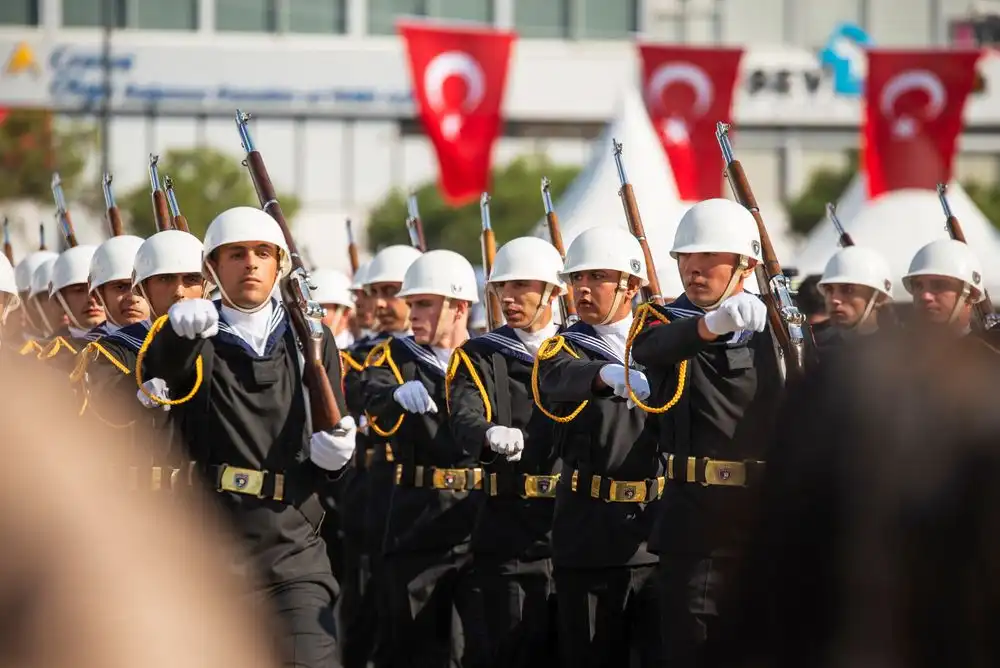
Contrary to expectations, the accession to power of the Adalet ve Kalkinma Partisi (AKP, Justice and Development Party) in 2002 was not another turning point in Turkish political life. Indeed, although the AKP has its roots in political Islam, it is not a purely Islamist political party. What is more, there had already been a clearly Islamist political party leading the country back in 1996: Necmettin Erbakan, the founding father of Turkish political Islam, came first in the early legislative elections of December 1995 and became Prime Minister in a coalition government in 1996. However, the longevity of the rule of Recep Tayyip Erdoğan’s AKP is certainly having a lasting impact on Turkey, in terms of its society, economy, and foreign policy. This issue is dealt with extensively in the book, in relation to the Kurdish question, the place of Islam in the country, and foreign policy, for example.
You have gathered specialists on Turkey from various disciplines such as political science, economy, and international relations. What complementary perspectives do the various contributions of this edited volume bring?
The edited volume has been written by academics who specialise in Turkish studies in several fields such as political science, economics, and international relations. This book follows an earlier one (Turkey, Russia and Iran in the Middle East: Establishing a New Regional Order), published by Palgrave in 2021, coedited by the same two editors.
The current volume is divided into six chapters that aim to address the main areas of the evolution of the Turkish Republic since 1923, from politics and citizenship to relations with Europe (including the economy), the relationship between religion and state, minority issues (in particular the Kurdish issue), and foreign policy.
The first chapter focuses on Turkish republicanism, which introduced the notion of a secular and ideally egalitarian political community and the principle of popular sovereignty as the building blocks of the new state. The chapter provides an alternative reading of Turkey’s political history with a discussion around the failures and the achievements of modern Turkish citizenship up to 2023. As a final point, it addresses the challenges that recent authoritarian rule has posed to Turkey’s century-old institution of republican citizenship.
The second chapter analyses Turkey’s economy over the past century from a critical political economy perspective, focusing on its integration into the global economy and its domestic socio-political transformations. The author argues that Turkey’s economic trajectory has been shaped by the alignment between the political and economic elites and calls for a more nuanced historiography to understand the country’s political economy direction.
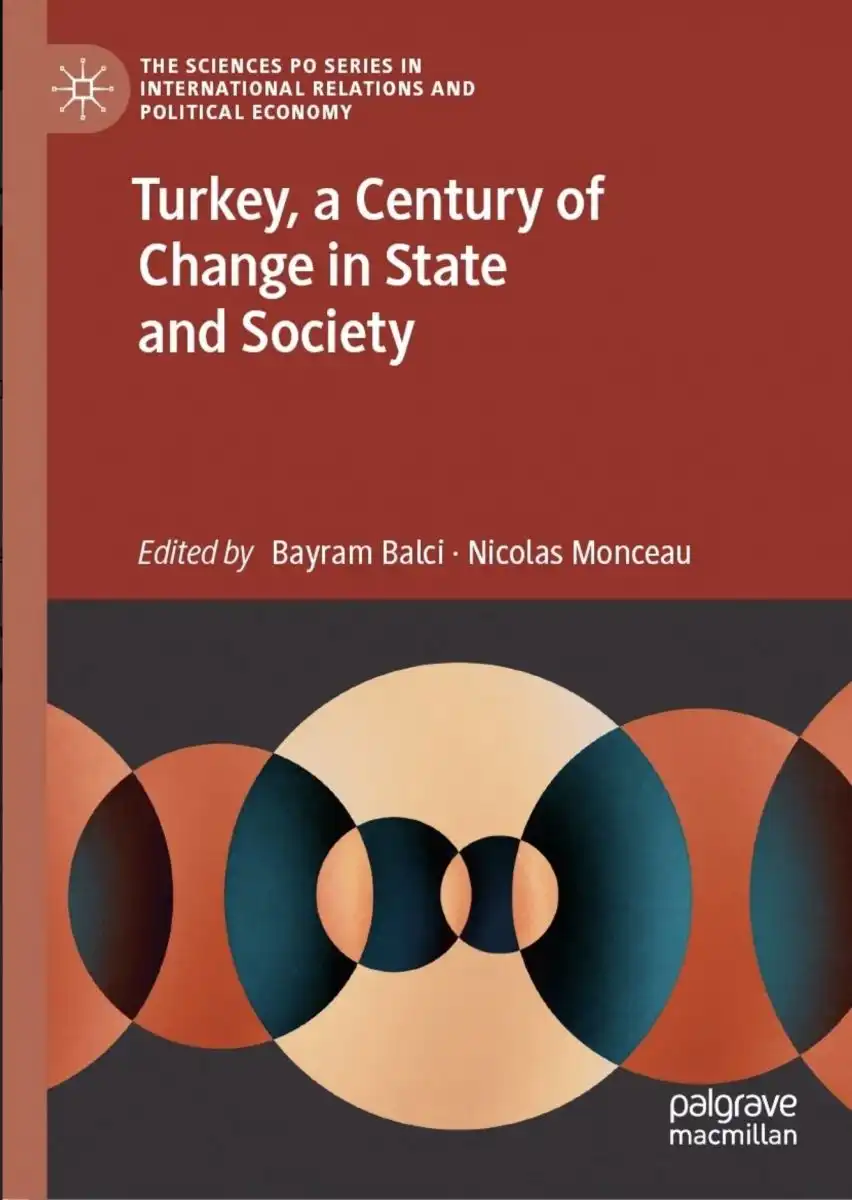
The third chapter analyses the major tendencies and transformations in the relationship between religion and the state from 1923 up to 2023. The contribution insists there has been a relative democratisation of Turkish secularism in the sense that religious liberties have increased under the AKP, but in favour of Sunni Muslims, without enough improvement regarding the rights of Alevis and other groups.
The fourth chapter addresses Turkey’s nation-building and the Kurdish question. The chapter analyses the different phases of the Kurdish issue in the country, from the first decades of the republican regime characterised by a denial of Kurdish identity, with several episodes of tensions and violence before the Second World War, until the collapse of the peace process engaged with the Kurdish national movement in Turkey because of the Syrian civil war, which led Turkey and the main Kurdish groups in Syria to adopt diverging approaches.
The fifth chapter deals with Turkey’s foreign policy toward Western powers. It discusses the main phases and key dates as well as the main characteristics and evolution of Turkish foreign policy. In this ever-changing context, this chapter attempts to present and analyse the transformations of a Turkish foreign policy that today is leading Turkey to distinguish itself as a singular country. While still a member of NATO it is nevertheless developing a strategic partnership with Putin’s Russia, which is not without ambiguities and regular tensions.
Concerning the importance of Turkish-European relations, the sixth chapter analyses these with a particular insistence on their ambiguity. In this chapter, the author traces the long and close historical relations between both Ottoman and republican Turkey and Europe, characterised by their ambivalence, between alliances and closeness to the point of representing a model of inspiration with universal scope on the one hand, and, on the other, oppositions and confrontations over the centuries until Turkey acquired national independence in 1922 at the end of a war against the European powers.
The diplomatic relations between so-called Western states and Turkey have often been ambivalent. How have the relations between Turkey and Europe evolved, and what is the current state of affairs?
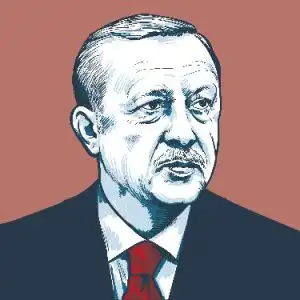
Relations between Turkey and the European Union (EU) have been a major issue in European integration debates for decades. Then and now, they raise questions about the nature of the European project, its identity, its geographical borders, and its political and cultural dimensions. These different questions have crystallised partisan divisions and provoked often passionate public debates in the Member States, questioning the distinctive character of the Turkish candidacy compared to other enlargements.
Apart from its application for EU membership, Turkey has maintained relations with Europe for centuries. As just described, these ancient and close ties have been characterised by ambivalence. After the Second World War, Europe and Turkey came closer together in the context of the construction of a new Europe and developed relations in a variety of fields—political, economic and commercial, military and security, sporting and cultural. After the signing of the Treaty of Rome in 1957, Turkey applied for association with the European Economic Community (EEC) in 1959, which led to the adoption of an association agreement in 1963 and the implementation of a customs union in 1996. Turkey obtaining the status of candidate country in 1999 and then the opening of negotiations for its accession to the EU in October 2005 were decisive stages in the relations between the two partners. But the enthusiasm of the first few years quickly gave way to a deadlock in the process, confronted as it was with numerous difficulties and obstacles.
Since 2006, the negotiation process has become notably slower. Like the European Council, several Member States (Cyprus, Greece, Germany, Austria, and France) have blocked the opening of new chapters because of the Cyprus issue or else their opposition to Turkey’s entry into the EU. Only ten chapters were opened between 2006 and 2013. Negotiations came to a halt for three years, with no new chapters opened between June 2010 and November 2013.
Pushed into the background, if not completely hidden, Turkey’s candidacy then returned to the centre stage of the European agenda during the years 2013-2015 because of the unprecedented migration crisis facing Europe, which made Turkey a key player in European policy on the matter. This dramatic rapprochement with the EU was reflected in the adoption of joint action plans and agreements on refugees (in particular the EU-Turkey agreement of March 2016) and led to a revival of accession negotiations with the opening of three new chapters between 2013 and 2016. This new Turkish-European partnership provoked an intense debate in Europe, unmatched in the period 1999-2005.
In 2023, Europeans are more than ever faced with a dilemma between the need to cooperate with Turkey in managing the migration crisis and fighting international terrorism while wanting to denounce its authoritarian excesses and regional interventionism. This ambivalence between cooperation and denunciation requires a clarification of the EU’s attitudes toward Turkey.
What happens depends on many unknown and unpredictable factors, including the outcome of the conflict in Syria, which will have a decisive influence on the situation and the number of refugees in Turkey; Turkey’s domestic political evolution toward more authoritarianism; the outcome of the EU-Turkey refugee agreements and how well they work; and, among other uncertainties in Europe, the impact of the Brexit model, the exit from the COVID-19 crisis, and the war in Ukraine. The combination of these factors will determine Turkey’s relations with or without the EU.
There are two political figures who have profoundly marked Turkey: Atatürk and Erdoğan. Does the book compare both leaders? How would you briefly summarise their respective influence on the country?
You are right to highlight this. Founded by Atatürk, the Turkish Republic has been—and continues to be—profoundly transformed by its current President, Erdoğan, who has just started his third term. Already in power for twenty years, Erdoğan could remain at the head of the country until 2027. Although comparing both leaders may appear difficult since both are products of their time—with all the changes a hundred years can bring—this question of the legacy of Atatürk and the current transformations brought by Erdoğan is very much at the heart of the chapters that compose the volume. In a very schematic way, we can say that there are both breaks and continuities between the two leaders.
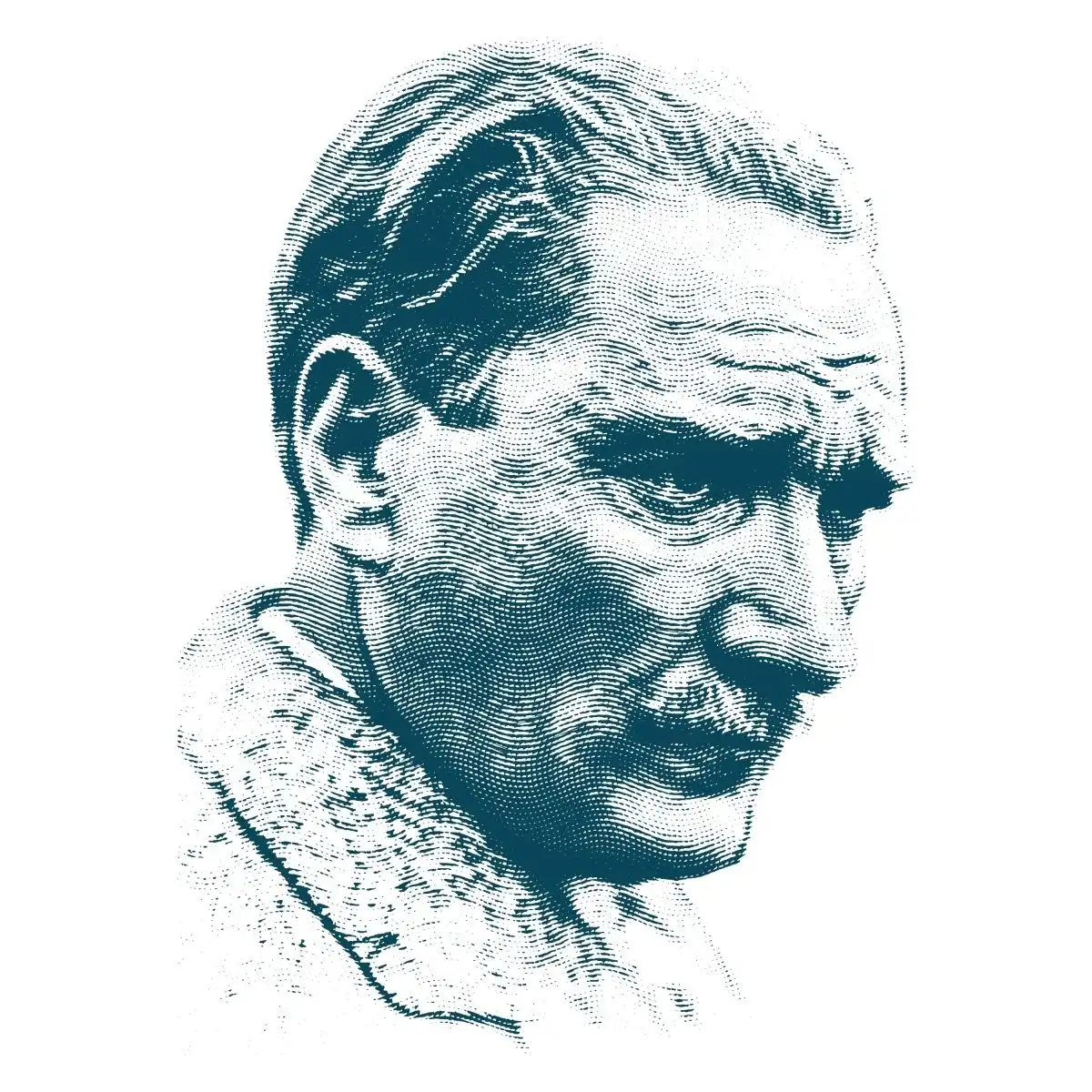
To understand the breaks, we first need to understand the break from the Ottoman past realised by Atatürk, including through the numerous reforms he implemented to build the Turkish nation-state and to establish a modern Turkish civilisation quite different from the Ottoman state and society. the Republic’s break with the Ottoman heritage has been most evident in the fields of religion and conception of citizenship. While the Empire characterised itself as multi-ethnic and multi-religious, the Republic of Turkey was built on a cult of homogeneity in both ethnic and religious terms.
From the Republic’s founding until after the Second World War, the relationship of the Turkish state with religion completely broke with Ottoman principles and practices. The numerous reforms toward secularisation implemented by Atatürk and the Kemalists during the interwar period bore witness to a desire to make a complete break with the Ottoman imperial and Islamic past. This was very apparent in the abolition of the caliphate in 1924 and the enshrining of the principle of secularism in the constitution in 1937, the closure of religious schools and Islamic courts, and the abandonment of Sharia law in favour of positive law, notably with the adoption of a civil code (1926) inspired by Switzerland.
Erdoğan’s policies of Islamisation thus of course mark another break in an opposite direction. But not everything between Atatürk and Erdoğan is a rupture. There is also some continuity. There is indeed continuity in the vision they share of Turkey’s place in relation to other nations, in the international arena. Even if Atatürk gave the impression of being pro-Western, for him, Turkey’s independence was essential, in terms of economics, politics, and foreign policy. As such, we can say that the strategic autonomy Erdoğan aims to give to Turkey is very Kemalist in a way. Both leaders share a commitment to the principle of non-alignment, Third-Worldism before its time. Finally, in the same spirit of independence dear to both political figures, there is a strong will to keep military autonomy.
Under Erdoğan’s government, Turkey is capable of producing 80% of its armaments requirements itself. In this respect, it could be said that certain principles dear to Atatürk were later put into practice by Erdoğan. So, although Erdoğan may appear in many respects to be the antithesis of Atatürk, on certain precepts he is simply donning his suit and appearing to be the new Atatürk.
On 29 October 2023, the Republic of Turkey will celebrate its 100 th anniversary, under Erdoğan’s presidency. How are the celebrations for the anniversary of the Republic of Turkey being prepared?
The celebrations marking 100 years since the proclamation of the Republic of Turkey on 29 October 2023 will certainly give rise to numerous events throughout the autumn—academic and scientific, cultural and artistic. President Erdoğan and the AKP governments have always attached great importance to emblematic dates in their country's history, including dates prior to the founding of the Turkish Republic. For example, the year 1453, which has gone down in history as the year of the Ottoman conquest of Constantinople, is commemorated with splendour every year in Istanbul. Similarly, the year 1072, which marks the arrival of the Seljuk Turks in Anatolia, is often recalled in President Erdoğan’s speeches. To come back to the 100th anniversary of the Republic of Turkey, the country is already engaged in preparations for various ceremonies. The official propaganda has already been launched, with, for example, a special song that covers musical genres from all over the country and a video produced by the party. The celebrations will help to highlight and showcase the country's major achievements, particularly in foreign policy and, more specifically, in the arms industry, which is enabling Turkey to increasingly ensure its strategic independence, an issue on which Turkish political elites from Atatürk to Erdoğan have been unanimous.
In order to contribute to the reflections relating to this centenary, the “Turkey 2023” research group is organising an international conference at Sciences Po on 4 October 2023. A number of French and international scholars and researchers will discuss the main developments in the Republic of Turkey over the last century, including national politics, the economy, foreign policy, and the relationship between religion, the state, and society.
Interview by Miriam Périer, CERI.
(credits: Sondem pour Shutterstock)
Follow us
Contact us
Media Contact
Coralie Meyer
Phone : +33 (0)1 58 71 70 85
coralie.meyer@sciencespo.fr
Corinne Deloy
Phone : +33 (0)1 58 71 70 68
corinne.deloy@sciencespo.fr
